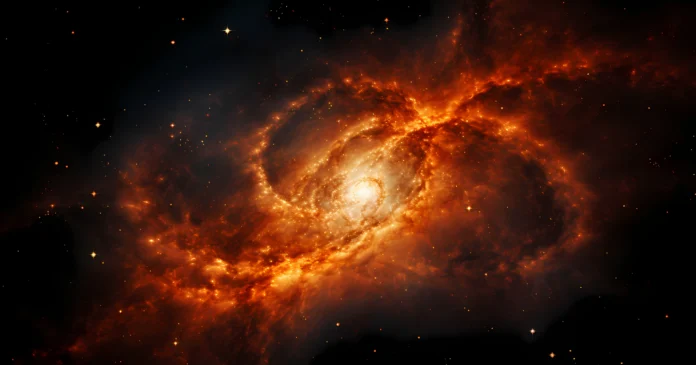Recent advances in black hole research have yielded important new information inside and outside our galaxy. These groundbreaking observations reshape our understanding of formation and evolution across different cosmic epochs.
Gaia-BH3: Milky Way’s Largest Stellar-Mass Black Hole
Astronomers have discovered a new named Gaia-BH3, about 2,000 light-years from Earth. This black holes has a mass nearly 33 times the Sun’s, making it the most enormous stellar-mass black hole discovered thus far. It was found by analyzing the gravitational influence of a nearby companion star, revealing its existence despite being inactive and not consuming material at the time. Discovery provides insights into the formation of such massive black holes, suggesting they may originate from primordial stars with minimal heavy elements.
UHZ1: The Most Distant Black Holes Detected
Using NASA’s Chandra and James Webb Space Telescopes, astronomers discovered the most distant ever observed in X-rays in a galaxy known as UHZ1. This black hol, which formed just 470 million years after the Big Bang, is estimated to have between 10 and 100 million solar masses. Its discovery sheds light on the early formation of supermassive black holes and challenges existing theories about their growth mechanisms.
LID-568: Fastest-Feeding Hole
A team has also reported the discovery of LID-568, a supermassive that appears to be feeding at a rate 40 times its Eddington limit. This extraordinary feeding rate indicates it is consuming matter rapidly, which could explain why such massive black holes were formed so early in the universe’s history.
Black Hole Formation and Evolution
These discoveries expand our understanding and provide critical insights into their formation and evolution across different cosmic epochs. The new findings highlight these enigmatic celestial objects’ diverse and complex nature, from dormant, massive stellar-mass black holes to fast-feeding supermassive.
How Gaia-BH3 is Different from Other Stellar-Mass Black Hole
Gaia-BH3 is a remarkable that stands out due to several unique characteristics compared to other known.
- Mass and Size: Gaia-BH3 has a mass of approximately 33 solar masses, making it the heaviest known stellar-mass black holes in the Milky Way, surpassing the previous record holder, Cygnus X-1, which has a mass of about 20 solar masses.
- Dormant Nature: Unlike many holes that actively consume material from their companions, Gaia-BH3 is classified as dormant. It does not appear to be shredding its companion star, a significant distinction from many other stellar-mass black holes exhibiting intense accretion activity.
- Formation and Composition: Gaia-BH3 orbits a metal-poor giant star, suggesting that the hole and its progenitor star formed in an environment with low metallicity. This characteristic supports theories that high-mass black holes can originate from metalpoor stars.
- Link to Early Universe: The companion star’s composition indicates that it likely formed shortly after the Big Bang, pointing to the possibility that Gaia-BH3 is over 13 billion years old.
Astronomers Detected Gaia-BH3 Using the Gaia Space Telescope
Astronomers detected Gaia-BH3 using data from the European Space Agency’s Gaia space telescope. The key detection method involved observing a companion star’s “wobbling” motion orbiting the black hol. This motion indicated the presence of a massive, unseen companion, leading astronomers to suspect a existence.
- Detection Methodology: The companion star exhibited a wobble due to gravitational influences from Gaia-BH3, which has a mass of 33 times that of the Sun.
- Precise Astrometry: Gaia’s precise measurements enabled astronomers to accurately determine the mass of Gaia-BH3, pinpointing it at 32.7 ± 0.82 solar masses.
- Follow-Up Observations: Additional observations from ground-based telescopes, such as the Very Large Telescope, confirmed the black hole’s mass and provided more details about its companion star’s chemical composition.
Mass of Gaia-BH3 Compare to Other Black Holes Discovered So Far?
Gaia-BH3 is currently recognized as the most massive stellar black hole discovered in the Milky Way, with approximately 33 solar masses. This surpasses the previous record holder, Cygnus X-1, which has a mass of about 21 solar masses.
- Comparison with Other Back Holes: Gaia-BH3 holds the record for the heaviest stellar-mass black hol, compared to Cygnus X-1 (21 solar masses) and Gaia BH1 (10 solar masses), which is the closest known to Earth.
- Context of Black Masses: Stellar typically range from 3 to 50 solar masses. Gaia-BH3’s mass places it at the higher end of this spectrum, making it an exceptional find within our galaxy.
Conclusion
The discovery of Gaia-BH3 highlights its significant mass compared to other known stellar black holes. It raises questions about how such massive form, given that current theories do not fully explain their existence. This discovery contributes to a deeper understanding of formation and stellar evolution.
Frequently Asked Questions About Black Holes
Q. What is a hole?
A. A black hol is a region in space where gravity is so strong that nothing, not even light, can escape from it. This intense gravitational pull occurs because a significant amount of matter has been compressed into an extremely small area.
Q. Do black holes really exist?
A. Yes, astronomers have observed several objects in space that can only be explained as black holes, confirming their existence.
Q. Are any black hol close to Earth?
A. The nearest known black holes are several thousand light-years away from Earth, making them relatively distant in cosmic terms.
Q. Will our Sun become a black holes?
A. No, our Sun does not have enough mass to become. Instead, it will eventually evolve into a red giant and then shed its outer layers, leaving behind a white dwarf.
Q. What is the biggest hole?
A. The largest known is estimated to be around three billion times the mass of the Sun. These supermassive back hole are typically found at the centers of galaxies.
Q. How does a true black form?
A. Black holes typically form from the remnants of massive stars that undergo supernova explosions. If the core’s mass exceeds about three times that of the Sun, it collapses under its own gravity to form a black hol.
Q. What happens when you get close to a black hole?
A. As one approaches they would experience extreme gravitational effects. Time would appear to slow down relative to an outside observer, and crossing the event horizon would mean no return.
Q. What do scientists think is inside?
A. The interior of a remains largely theoretical. Current understanding suggests that once matter crosses the event horizon, it becomes part of an infinitely dense singularity where classical physics breaks down.
These questions encapsulate some of the most common inquiries regarding black holes and highlight their mysterious nature within astrophysics.
Read Also: न्यायालय का रुख



